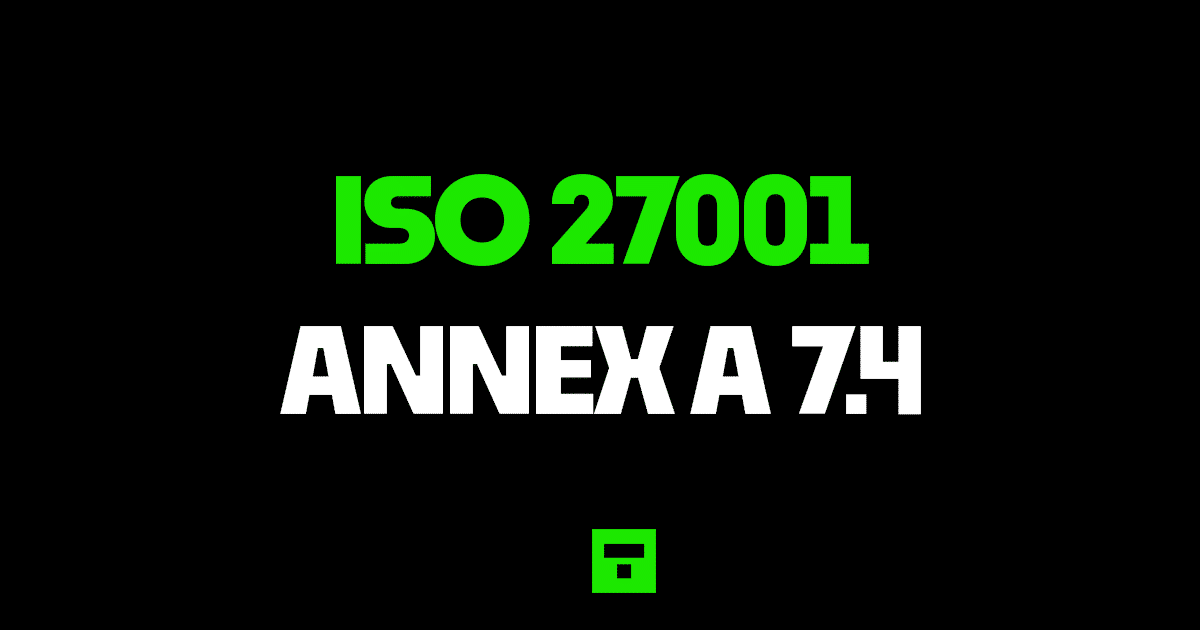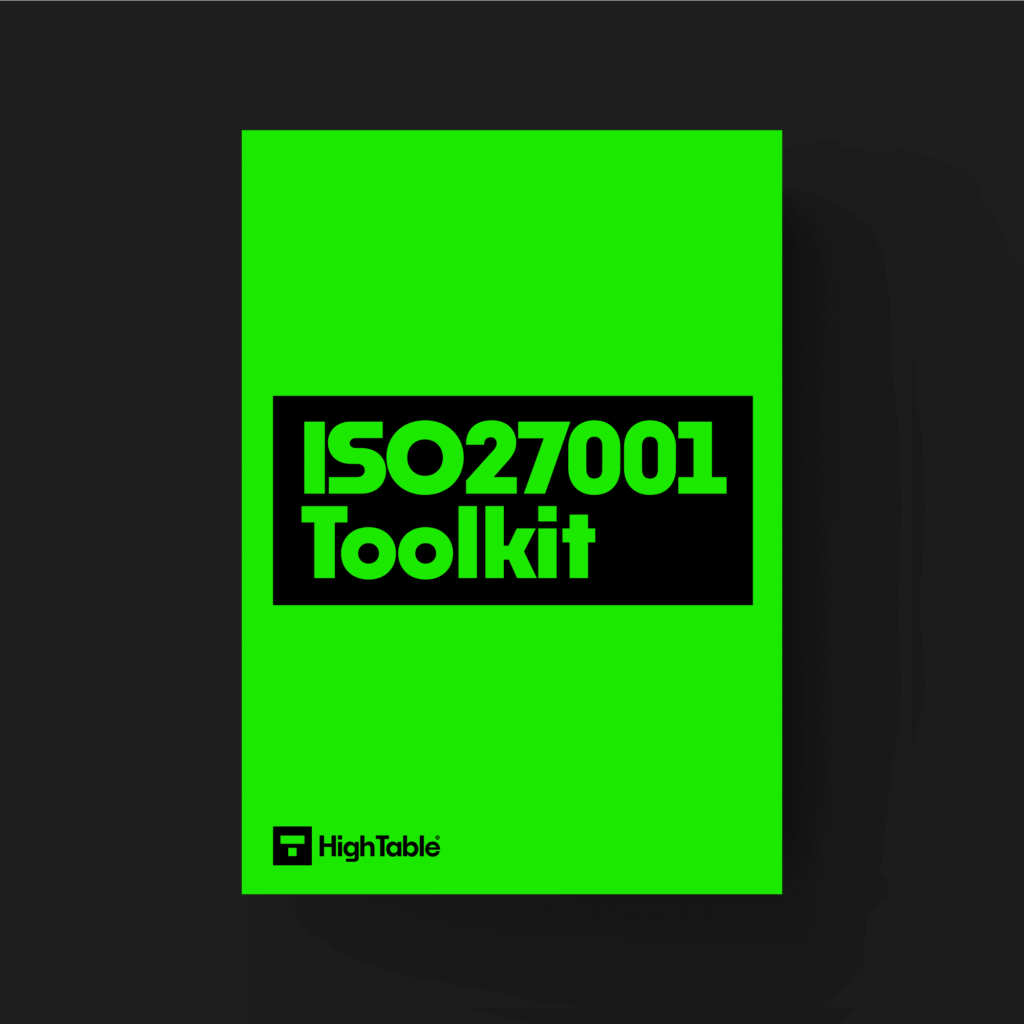Table of contents
- ISO 27001 Physical Security Monitoring
- What is ISO 27001 Annex A 7.4 Physical Security Monitoring?
- ISO 27001 Annex A 7.4 Physical Security Monitoring Implementation Guide
- How to comply with ISO 27001 Annex A 7.4
- How to pass an audit of ISO 27001 Annex A 7.4
- Top 3 Mistakes People Make for ISO 27001 Annex A 7.4
- Why is a Physical Security Monitoring Important?
- ISO 27001 Annex A 7.4 Physical Security Monitoring FAQ
- Get the Help of the ISO 27001 Ninja
- Matrix of ISO 27001 controls and attribute values
ISO 27001 Physical Security Monitoring
The focus for this ISO 27001 Control is monitoring for unauthorised physical access. As one of the ISO 27001 controls this is about catching people that you don’t want to gain entry when and if they gain entry.
You will learn what the ISO 27001 control 7.4 is, how to simply and easily implement it for ISO 27001 certification and I will show you some common gotchas so you can avoid them.
What is ISO 27001 Annex A 7.4 Physical Security Monitoring?
ISO 27001 Annex A 7.4 Physical Security Monitoring is an ISO 27001 control that requires an organisation to have a physical security perimeter to protect offices and processing facilities.
ISO 27001 Annex A 7.4 Purpose
Annex A 7.4 is a preventive control and a detective control that ensures you detect and deter unauthorised physical access.
ISO 27001 Annex A 7.4 Definition
The ISO 27001 standard defines Annex A 7.4 as:
Premises should be continuously monitored for unauthorised physical access.
ISO27001:2022 Annex A 7.4 Physical Security Monitoring
ISO 27001 Annex A 7.4 Physical Security Monitoring Implementation Guide
General Guidance
You are going to have to
- define your physical security requirements based on business need and risk
- implement a topic specific Physical and Environmental Security Policy
- have a physical security perimeter for any physical location that processes information
- have alarms and monitors
- have an intruder response process
- meet all laws and regulations including those for fire and health and safety
Health and Safety
Your number one priority is to meet the requirements of law and regulation. Be sure to engage with a legal professional to understand what you can and cannot do and to check that you are not breaking any laws. The most significant laws are those around health and safety as the protection of human life and wellbeing is always our number priority. There are common things that should be considered such as fire suppression, fire doors, fire alarms, doors that fail open. Whilst we want to protect buildings and information our absolute priority is to protect people.
Alarms and Monitors
When looking at alarms and monitors you are looking at a preventive control to alert you when something has occurred. We all know what alarms are and getting alarms fitted is a very good idea. You want to define your response process and make sure that contacts of who is informed is up to date. Who is getting that call at 2am in the morning and what are they going to do when they get it?
CCTV
You can consider the use of CCTV but be aware that comes with some additional overheads with laws on data protection and the likes of GDPR. You should seek some legal advice before installing CCTV and be sure to do it in a way that is compliant if it is something that you do want to do. There are considerations such as how, how long, where, in what format you store the recordings. Then how do you get access to it, who can get access to it and how do you destroy it. It is not as simple as just banging up a Ring camera.
ISO 27001 Templates
ISO 27001 templates have the advantage of being a massive boost that can save time and money so before we get into the implementation guide we consider these pre written templates that will sky rocket your implementation.
For Annex A 7.4 you need a topic specific Physical and Environmental Security Policy Template. In addition, you could save months of effort with the ISO 27001 toolkit that take 25 years of experience and distill it in a pack of prewritten best practice awesomeness so you can DIY your ISO 27001 certification. Not interested in ISO 27001 templates, then you can skip to the next section.
DO IT YOURSELF ISO 27001
All the templates, tools, support and knowledge you need to do it yourself.
How to comply with ISO 27001 Annex A 7.4
To comply with ISO 27001 Annex A 7.4 you are going to implement the ‘how’ to the ‘what’ the control is expecting. In short measure you are going to
- Define your external physical perimeter requirements
- Define your monitoring requirements
- Define your internal sub zone physical perimeter requirements
- Consult with a legal professional to ensure you are meeting legal and regulatory requirements
- Implement your physical security perimeters
- Implement your monitors
- Write, sign off, implement and communicate your topic specific Physical and Environmental Security Policy
- Write, sign off, implement and communicate your perimeter incident response procedures
- Implement a process of internal audit that checks that the appropriate controls are in place and effective and where they are not follow the continual improvement process to address the risks
How to pass an audit of ISO 27001 Annex A 7.4
To pass an audit of ISO 27001 Annex A 7.4 you are going to make sure that you have followed the steps above in how to comply.
You are going to do that by first conducting an internal audit, following the How to Conduct an ISO 27001 Internal Audit Guide.
What will an audit check?
The audit is going to check a number of areas. Lets go through them
1. That you have a physical security perimeter
One of the easier things for an auditor to check is the physical security perimeter as it is usually the first thing they will encounter when they come to audit you if you have a physical location. For all the physical locations in scope they are going to visit and check.
2. The physical security monitors that you have in place
They have been doing this a long time and done many audits so they know what to look for. They will test the controls and see what happens. They will try to open doors, open cupboards, gain access to areas they should not. Your monitors should be such that they can respond to this. They will also look to see that you have tested the monitors in the last 12 months.
3. Documentation
They are going to look at audit trails and all your documentation. They will look at appropriate access reviews, logs of monitors and reports, incidents and how you managed them.
Top 3 Mistakes People Make for ISO 27001 Annex A 7.4
The top 3 mistakes people make for ISO 27001 Annex A 7.4 are
1. Your physical security monitoring is turned off
What do I mean by turned off? In simple terms it means that you have a camera that works on a battery and the battery is dead. Or you have just turned the camera off. Perhaps someone has disconnected an alarm because it goes off all the time and annoys them.
2. One or more members of your team haven’t done what they should have done
Prior to the audit check that all members of the team have done what they should have. Have you tested the security monitoring? Who gets informed about the alarm and do they still work here?
3. Your document and version control is wrong
Keeping your document version control up to date, making sure that version numbers match where used, having a review evidenced in the last 12 months, having documents that have no comments in are all good practices.
Why is a Physical Security Monitoring Important?
A physical security monitor is important because it is always watching. As a detective control you can personally, physically watch everything all the time. Having monitors in place that work continuously allow you to detect unauthorised activity and respond to it. Without it, you would not know if something had happened until it was too late.
ISO 27001 Annex A 7.4 Physical Security Monitoring FAQ
You will need the ISO 27001 Physical and Environmental Security Policy. You also want to consider your data protection polices at this point.
Examples include:
audible alarms
CCTV
remote cameras
contact detectors
sound detectors
motion detectors
heat detectors
breaking glass detectors
There are templates for ISO 27001 Annex A 7.4 located in the ISO 27001 toolkit
ISO 27001 Annex A 7.4 Physical Security Monitoring Sample PDFs can be found in the ISO 27001 toolkit
If you have a physical location, office or processing facility, then yes.
Yes. You can write the policies for ISO 27001 Annex A 7.4 yourself. You will need a copy of the standard and approximately 8 hours to do it. It would be advantageous to have a background in information security management systems. Alternatively you can download them the ISO 27001 Physical and Environmental Security Policy
The main template you need is the Physical and Environmental Security Policy
ISO 27001 Annex A 7.4 is not particularly hard as it is mainly common sense. As long as you consult with a legal professional on what you are doing to ensure you are not break any laws or regulations you will be fine. Physical security has been around a long time.
To write the Physical and Environmental Security Policy will take about 8 hours. To implement the controls will depend on what you re doing and what you are implementing. It can take from a few hours to a few months depending on how many locations you have and the level of security that you are implementing.
The Physical and Environmental Security Policy will cost you 8 hours to write yourself or less than £10 to buy. The cost to the controls will depend on what controls you implement and where you buy them.
Get the Help of the ISO 27001 Ninja
Book your FREE 30 Minute ISO 27001 Strategy Call and let me show you how you can do it 30x cheaper and 10x faster that you ever thought possible.
Matrix of ISO 27001 controls and attribute values
| Control type | Information security properties | Cybersecurity concepts | Operational capabilities | Security domains |
|---|---|---|---|---|
| Preventive | Confidentiality | Protect | Physical_security | Protection |
| Detective | Integrity | Detect | Defence | |
| Availability |


